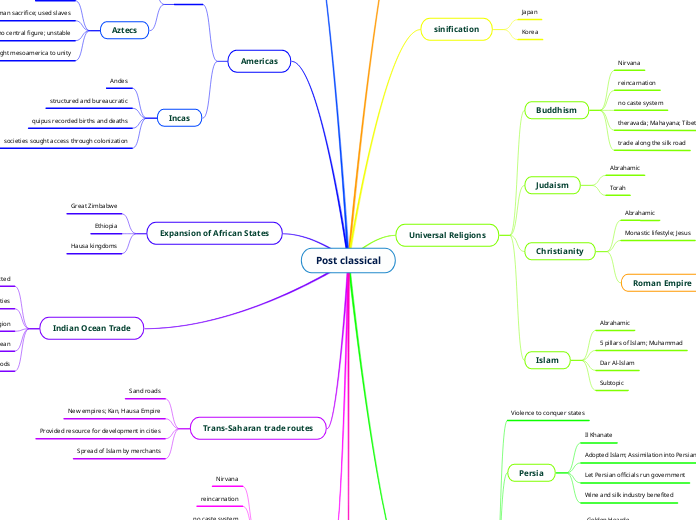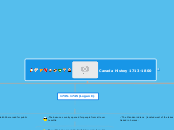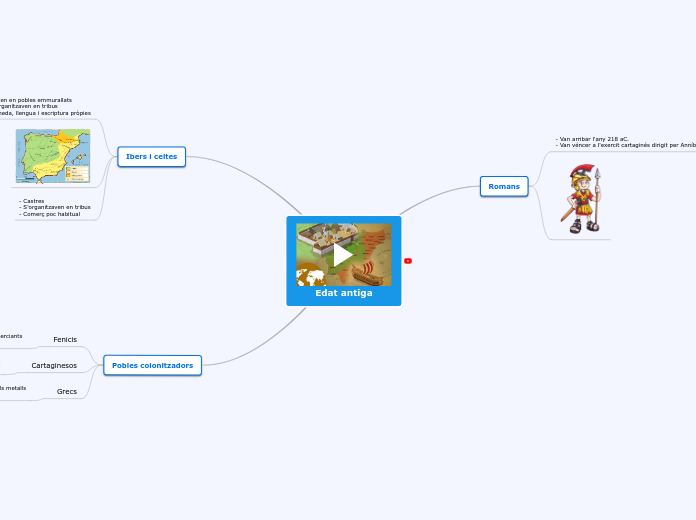Post classical
Silk Roads
Caravanserai
Trading cities: Kashgar and Samarkand
Diffusion of ideas, luxury goods, and spices
connected Europe to Asia
Spread of Buddhism to SEA through merchants
Trans-Saharan trade routes
Spread of Islam by merchants
Provided resource for development in cities
New empires; Kan, Hausa Empire
Sand roads
Indian Ocean Trade
transportation costs were cheaper; bulk goods
Zheng He from China set mission to explore Indian Ocean
Great wealth to the region
Diasporic communities
Spread of Islam
Naval technology allowed S.E.A to be connected
Expansion of African States
Hausa kingdoms
Ethiopia
Great Zimbabwe
Americas
Incas
societies sought access through colonization
quipus recorded births and deaths
structured and bureaucratic
Andes
Mexica
Aztecs
brought mesoamerica to unity
no central figure; unstable
human sacrifice; used slaves
polytheistic
Theocracy
Advances
House of Wisdom
medicine
Literature
Math
Mongols
Army was well organized leading to success
resurrection of trade and silk road
paper diffusing into Europe from China
bubonic plague
fall of Mongols
Death of trade routes
steep decline in population
China
Used Chinese administrative practices and techniques of taxation
Rule in China was short
Ming dynasty
Steepe life
Yuan dynasty
First invasion by Mongols
Russia
Orthodox Church flourished
Ruled from distant
Golden Hoarde
Persia
Wine and silk industry benefited
Let Persian officials run government
Adopted Islam; Assimilation into Persian culture
Il Khanate
Violence to conquer states
Universal Religions
Islam
Subtopic
Dar Al-Islam
5 pillars of Islam; Muhammad
Christianity
Roman Empire
Decentralization led to smaller states
Serfdom
Manorial System
Feudalism
Monastic lifestyle; Jesus
Judaism
Torah
Abrahamic
Buddhism
trade along the silk road
theravada; Mahayana; Tibetan
no caste system
reincarnation
Nirvana
sinification
Korea
Japan
Song Dynasty
Innovations
Later innovations
Marco Polo
Paper
Gunpowder
champa rice
grand canal
paper money
trade improved
Confucianism
Neo confucianism
blend of daoism
filial piety
Mandate of heaven
expansion of bureaucracy









